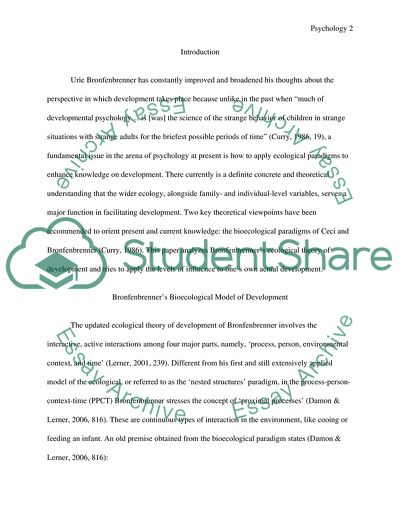Cite this document
(Analyzing Urie Bronfenbrenners Ecological Theory of Development Coursework Example | Topics and Well Written Essays - 1500 words, n.d.)
Analyzing Urie Bronfenbrenners Ecological Theory of Development Coursework Example | Topics and Well Written Essays - 1500 words. https://studentshare.org/environmental-studies/1756429-urie-bronfenbrenner
Analyzing Urie Bronfenbrenners Ecological Theory of Development Coursework Example | Topics and Well Written Essays - 1500 words. https://studentshare.org/environmental-studies/1756429-urie-bronfenbrenner
(Analyzing Urie Bronfenbrenners Ecological Theory of Development Coursework Example | Topics and Well Written Essays - 1500 Words)
Analyzing Urie Bronfenbrenners Ecological Theory of Development Coursework Example | Topics and Well Written Essays - 1500 Words. https://studentshare.org/environmental-studies/1756429-urie-bronfenbrenner.
Analyzing Urie Bronfenbrenners Ecological Theory of Development Coursework Example | Topics and Well Written Essays - 1500 Words. https://studentshare.org/environmental-studies/1756429-urie-bronfenbrenner.
“Analyzing Urie Bronfenbrenners Ecological Theory of Development Coursework Example | Topics and Well Written Essays - 1500 Words”. https://studentshare.org/environmental-studies/1756429-urie-bronfenbrenner.


